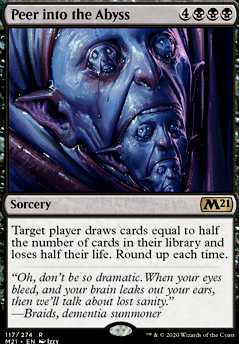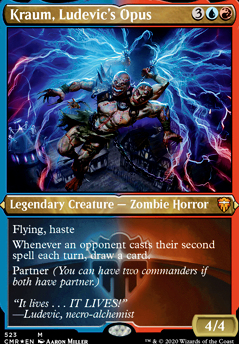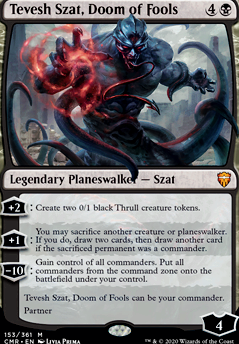
Turbo Szat [CEDH Primer]
Commander / EDH Ad Nauseam Competitive Multiplayer Primer Spellslinger UBR (Grixis) Wheels
Land (30)
- 1x Ancient Tomb
- 1x Arid Mesa
- 1x Blightstep Pathway Flip
-
1x
Blood Crypt

- 1x Bloodstained Mire
- 1x City of Brass
- 1x Clearwater Pathway Flip
- 1x Command Tower
- 1x Exotic Orchard
- 1x Flooded Strand
- 1x Forbidden Orchard
- 1x Gemstone Caverns
- 1x Island
- 1x Luxury Suite
- 1x Mana Confluence
- 1x Marsh Flats
- 1x Misty Rainforest
- 1x Morphic Pool
- 1x Mountain
- 1x Polluted Delta
- 1x Riverglide Pathway Flip
- 1x Scalding Tarn
- 1x Snow-Covered Island
- 1x Snow-Covered Mountain
- 1x Snow-Covered Swamp
- 1x Spire of Industry
-
1x
Steam Vents

- 1x Swamp
- 1x Training Center
-
1x
Watery Grave

Creature (10)
Instant (25)
- 1x Pact of Negation
- 1x Brainstorm
- 1x Chain of Vapor
- 1x Culling the Weak
- 1x Dark Ritual
- 1x Demonic Consultation
- 1x Dispel
- 1x Mystical Tutor
- 1x Red Elemental Blast
- 1x Vampiric Tutor
- 1x Abrade
- 1x Brain Freeze
- 1x Cabal Ritual
- 1x Cyclonic Rift
- 1x Delay
- 1x Lim-Dul's Vault
- 1x Mana Drain
- 1x Rakdos Charm
- 1x Snap
- 1x Tainted Pact
- 1x Deflecting Swat
- 1x Fierce Guardianship
- 1x Force of Negation
- 1x Ad Nauseam
- 1x Force of Will
Sorcery (13)
- 1x Burning Inquiry
- 1x Gitaxian Probe
- 1x Winds of Change
- 1x Demonic Tutor
- 1x Diabolic Intent
- 1x Grim Tutor
- 1x Jeska's Will
- 1x Praetor's Grasp
- 1x Toxic Deluge
- 1x Wheel of Fortune
- 1x Windfall
- 1x Whispering Madness
- 1x Peer into the Abyss
Planeswalker (2)
Commanders (2)
Artifact (15)
- 1x Chrome Mox
- 1x Jeweled Lotus
- 1x Lion's Eye Diamond
- 1x Lotus Petal
- 1x Mana Crypt
- 1x Mox Opal
- 1x Mana Vault
- 1x Skullclamp
- 1x Sol Ring
- 1x Arcane Signet
- 1x Dimir Signet
- 1x Fellwar Stone
- 1x Talisman of Creativity
- 1x Talisman of Dominance
- 1x Talisman of Indulgence
Enchantment (3)
Suggestions
Updates Add
Comments
Attention! Complete Comment Tutorial! This annoying message will go away once you do!
Important! Formatting tips — Comment Tutorial — markdown syntax
Please login to comment
Casual
91% Competitive
| Date added | 3 years |
| Last updated | 3 years |
| Exclude colors | WG |
| Splash colors | UBR |
| Legality | This deck is not Commander / EDH legal. |
| Rarity (main - side) | 15 - 0 Mythic Rares 50 - 0 Rares 14 - 0 Uncommons 15 - 0 Commons |
| Cards | 100 |
| Avg. CMC | 2.11 |
| Tokens | Spirit 1/1 C, Thrull 0/1 B, Treasure |
| Folders | CEDH Grixis |
| Votes | |
| Ignored suggestions | |
| Shared with | |
| Views |


